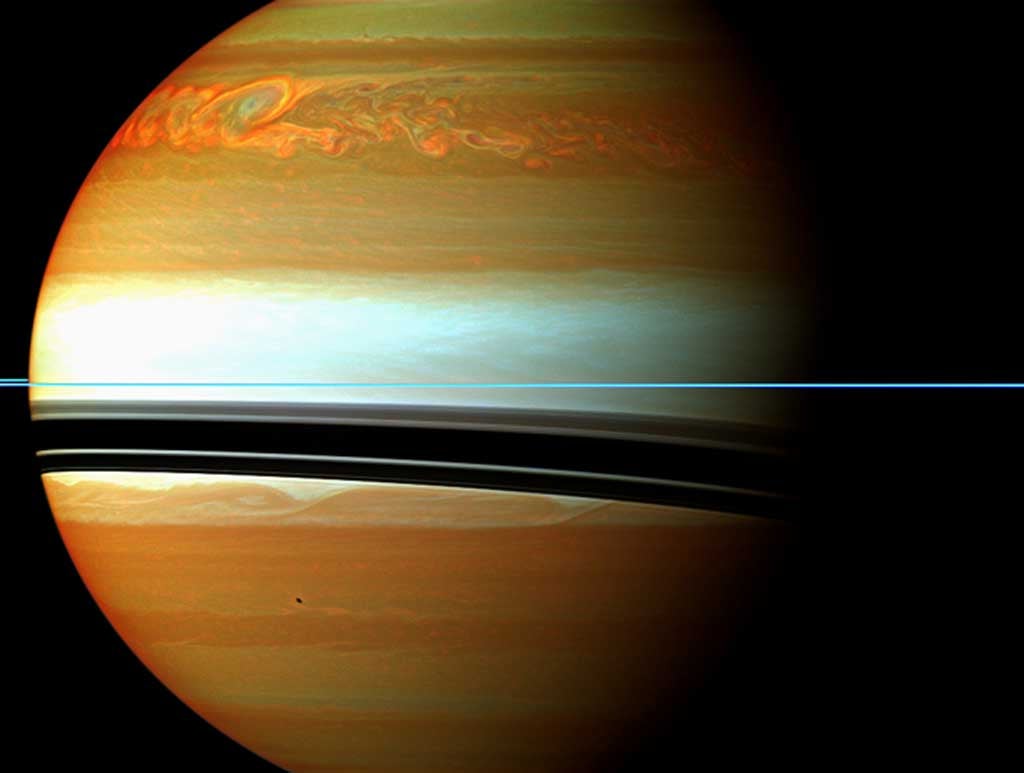“We didn’t think we’d see lightning on Saturn’s day side — only its night side,” said Ulyana Dyudina from the California Institute of Technology in Pasadena. “The fact that Cassini was able to detect the lightning means that it was very intense.”
The storm occurred last year. The lightning flashes appear brightest in the blue filter of Cassini’s imaging camera March 6, 2011. Scientists aggressively heightened the blue tint of the image to determine its size and location. Scientists are still analyzing why the blue filter catches the lightning. It might be that the lightning really is blue, or it might be that the short exposure of the camera in the blue filter makes the short-lived lightning easier to see.
What scientists do know is that the intensity of the flash is comparable to the strongest flashes on Earth. The visible energy alone is estimated to be about 3 billion watts lasting for one second. The flash is approximately 100 miles (200 kilometers) in diameter when it exits the tops of the clouds. From this, scientists deduce that the lightning bolts originate in the clouds deeper down in Saturn’s atmosphere where water droplets freeze. This is analogous to where lightning is created in Earth’s atmosphere.
In composite images that show the band of the storm wrapping all the way around Saturn, scientists have seen multiple flashes. In one composite image, they recorded five flashes, and in another, three flashes.
“As summer storm season descends upon Earth’s northern latitudes, Cassini provides us a great opportunity to see how weather plays out at different places in our solar system,” said Linda Spilker, Cassini from NASA’s Jet Propulsion Laboratory in Pasadena, California. “Saturn’s atmosphere has been changing over the eight years Cassini has been at Saturn, and we can’t wait to see what happens next.”










